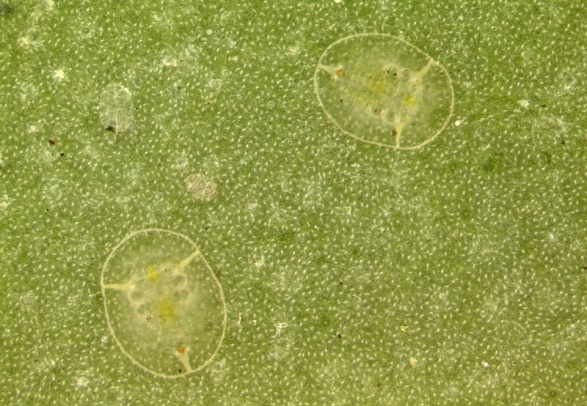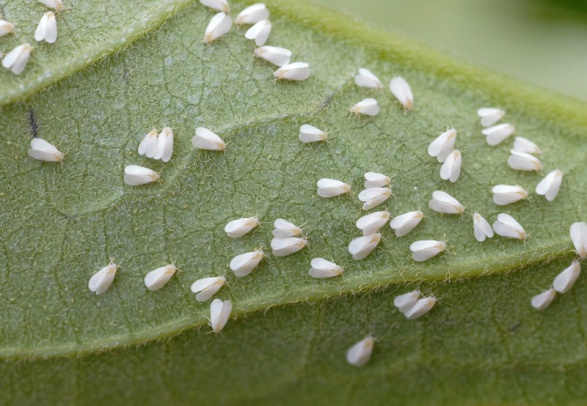
Citrus whitefly
Dialeurodes citri (Ashmead)
(Insecta: Hemiptera: Aleyrodidae)
Adults are tiny and powdery white with a wingspan of about 3.1 mm. The nymphs are oval, thin, translucent, and scale-like with rudimentary legs and antennae. Pupae are thicker than nymphs, opaque, and may show eye spots of the developing adults.
Completion of the life cycle takes 41 to 84 days. Citrus whiteflies overwinter in the last nymphal stage. Pupae appear in early spring, and adults emerge in March and April. Each female may lay up to 150 eggs onto foliage. The sap-feeding nymphs remain sessile until they reach the adult stage.
Native to India, Dialeurodes citri was introduced to Florida in the late 19th century. Today, it is a serious greenhouse citrus pest in many of the United States, including Alabama, California, Colorado, Florida, Georgia, Illinois, Louisiana, Mississippi, North Carolina, South Carolina, Texas, Virginia, and Washington, D.C.
Citrus is the main host of citrus whiteflies. However, many other plants are suitable resources for this polyphagous insect.
Images
To
save the Web-optimized images shown below to your hard drive:
PC users: right click to "Save Picture (or Image) As..."
Mac users: click and drag to your desktop.

Translucent nymphs of citrus whitefly, Dialeurodes citri (Ashmead)
(Photographer: Lyle Buss, University of Florida)

Adult citrus whitefly, Dialeurodes citri (Ashmead)
(Photographer: Lyle Buss, University of Florida)

Citrus leaf infested with adult citrus whitefly, Dialeurodes citri (Ashmead)
(Photographer: Lyle Buss, University of Florida)